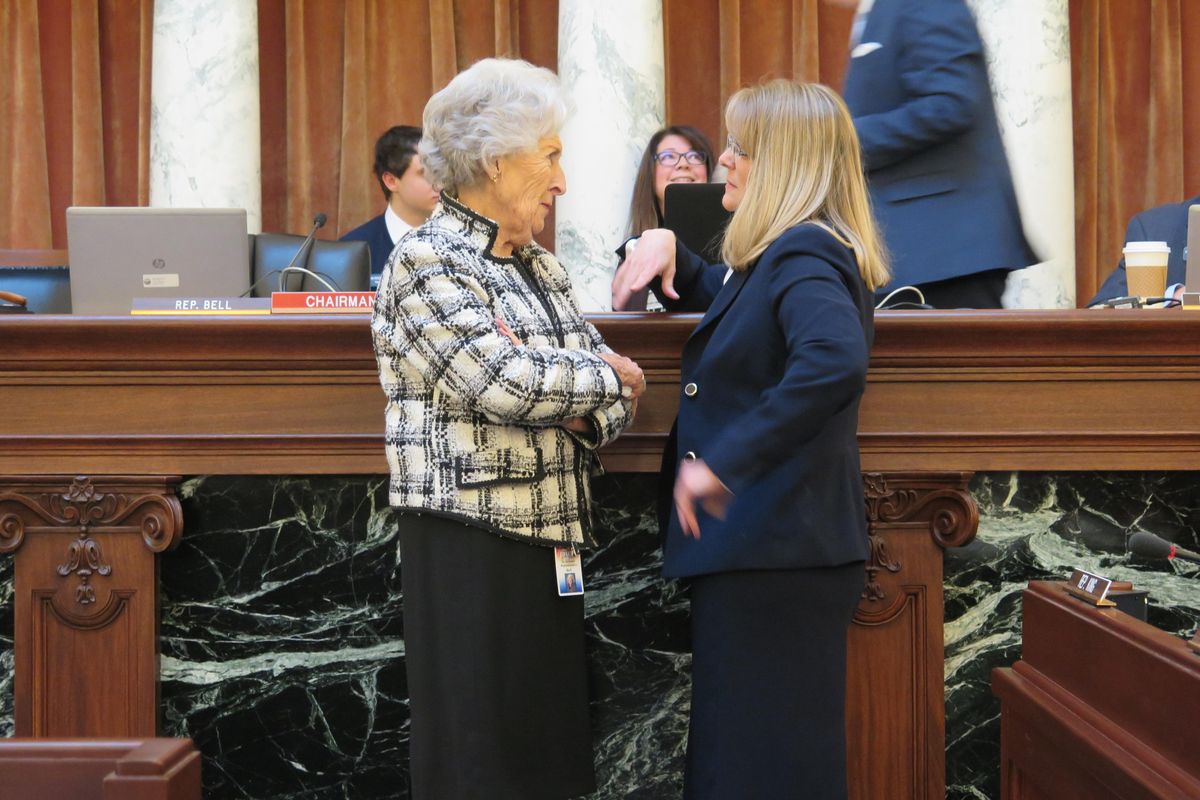Idaho school budget set with 5.9 percent increase for next year; no rancor or dissent

Idaho lawmakers on Monday set a public school budget for next year that reflects a 5.9 percent, $100 million increase in state funding next year – and it passed unanimously and with no debate or dissent.
“I am so grateful I stayed to see this day,” said Rep. Maxine Bell, R-Jerome, the longtime House co-chair of the Legislature’s Joint Finance-Appropriations Committee, who is retiring after this year. “Those of you who are new, you can’t believe how this worked before.”
Often the focus of much legislative dissent – one year, it took 20 tries before the joint committee could agree on a budget plan – the school budget has been less controversial since Gov. Butch Otter appointed a task force for improving the state’s schools that laid out a five-year plan for improvements, including major investments into boosting teacher salaries through a “career ladder” plan. The newly set budget includes full funding for that plan’s fourth year, at $41.6 million.
The budget, which totals $1.785 billion in state general funds, includes a boost in discretionary funding to school districts – something state Superintendent of Schools Sherri Ybarra had requested, but Gov. Butch Otter hadn’t recommended. However, it trimmed elsewhere and came in slightly below Otter’s recommendation of a 6 percent increase and Ybarra’s request for 6.8 percent boost.
Sen. Shawn Keough, R-Sandpoint, the Senate co-chair of JFAC, noted that on some line items, JFAC set the budget between the governor’s recommendation and the superintendent’s request. “Some of them, quite frankly, are carved a little bit to try to put money into discretionary,” she said. “We continue to hear from our superintendents that that flexibility is needed, versus strings being attached to funding.”
“I think the folks that work on this budget work really hard, and they listened to our school districts and our school boards,” Keough said. “I think that this morning’s work was a reflection of the work they put into that really year-round. It’s nice to have the work of the governor’s task force provide a blueprint.”
Keough, who like Bell is retiring after this year, said, “I’m hopeful the same kind of work and visionary leadership can continue in the next administration and in the next Legislature.”
The budget covers about three-quarters of Ybarra’s request for a substantial increase in discretionary funding for school districts – $7.2 million to help districts cover health insurance cost increases, and $4 million to increase discretionary funding that school districts can direct to their own top-priority expenses, from utilities to textbooks.
It also increases funding for classroom technology by $10.5 million – $500,000 more than either Ybarra or Otter requested; adds another $500,000 for the cost of IT staffing in school districts, for which lawmakers said districts are facing shortfalls; and increases funding for literacy proficiency by $1.7 million, well below the governor’s requested $6.5 million. Where Otter had requested $5 million for college and career advisors and mentors, and Ybarra had requested $2 million, JFAC budgeted $2 million. Also, it increased professional development funding by $600,000; Otter had requested a $4 million boost.
The group that crafted the budget included Rep. Wendy Horman, R-Idaho Falls; Senate Education Chairman Dean Mortimer, R-Idaho Falls; Sen. Janie Ward-Engelking, D-Boise; and Rep. Steve Miller, R-Fairfield.
Ybarra was brimming with enthusiasm over the newly set school budget. “It’s great – another $100 million for public schools!” she said. “We have a plan to follow, we’re all on the same page.” She added, “I’m really excited.”
.
The school budget, which is broken down by division into seven bills, still needs passage in both the House and Senate and the governor’s signature to become law, but budgets rarely change once they’re set by the joint committee.